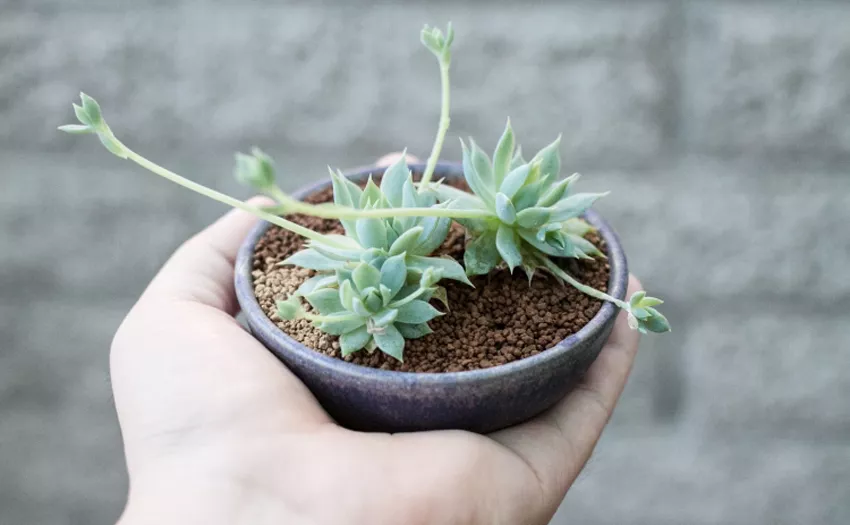Succulents have gained popularity as attractive and low-maintenance houseplants. Their unique shapes and textures make them a favorite among plant enthusiasts. However, it is crucial to be aware that not all succulents are safe for pets, particularly cats. Some succulents contain toxic compounds that can be harmful when ingested by our feline companions. In this article, we will provide a comprehensive guide to help you identify and avoid succulents that are toxic to cats.
Understanding Toxicity in Succulents
Toxicity refers to the potential of a substance to cause harm when consumed or exposed to living organisms. While most succulents are considered non-toxic to humans, some contain compounds that can be toxic to pets, including cats. These toxic compounds may cause gastrointestinal issues, dermatitis, or even more severe health problems in felines. It is important to note that the degree of toxicity can vary among different species and even different parts of the same plant.
Common Toxic Succulents
To ensure the safety of your feline companions, it is essential to be aware of the succulents that can be toxic to cats. Here are some common succulents known to be toxic:
Jade Plant (Crassula spp.): Jade plants are popular succulents known for their thick, fleshy leaves and tree-like appearance. However, they contain a substance called bufadienolides, which can be toxic to cats if ingested. Symptoms of jade plant poisoning in cats may include vomiting, depression, and in severe cases, cardiac abnormalities.
Echeveria (Echeveria spp.): Echeveria is a diverse genus of succulents with rosette-shaped foliage. While not highly toxic, the sap of some Echeveria species can cause mild gastrointestinal upset in cats if ingested.
Kalanchoe (Kalanchoe spp.): Kalanchoe is a popular succulent known for its vibrant and long-lasting flowers. However, all parts of the Kalanchoe plant contain cardiac glycosides, which are toxic to cats. Ingestion of Kalanchoe can lead to symptoms such as vomiting, diarrhea, and abnormal heart rhythm in felines.
Pencil Cactus (Euphorbia tirucalli): Pencil cactus, also known as milk bush, is a succulent with thin, pencil-like stems. It contains a milky sap that can cause irritation and gastrointestinal upset in cats if ingested or if the sap comes into contact with the skin or eyes.
Aloe Vera (Aloe vera): Aloe vera is a well-known succulent valued for its medicinal properties. While it is generally safe for external use on cats, ingestion of aloe vera gel or latex can cause gastrointestinal upset, including vomiting and diarrhea.
Snake Plant (Sansevieria spp.): Snake plants are popular indoor plants known for their upright, sword-shaped leaves. While they are generally considered non-toxic to cats, ingestion in large amounts can cause gastrointestinal discomfort.
It is important to note that this is not an exhaustive list, and there may be other succulents with varying levels of toxicity to cats. When in doubt, it is best to research specific succulents before introducing them into your home where cats can access them.
Preventing Toxicity and Ensuring Cat Safety
To protect your feline companions from succulent toxicity, it is essential to take preventive measures. Here are some steps you can follow:
Research Succulents: Before adding any new succulents to your home, research their toxicity levels, especially if you have cats. Reliable sources such as the ASPCA’s list of toxic and non-toxic plants can help you identify potentially harmful succulents.
Avoid Toxic Succulents: If you have cats, it is best to avoid keeping toxic succulents in your home or outdoor areas accessible to your pets. Opt for cat-safe alternatives or non-toxic succulents that pose no harm to feline companions.
Secure Plants: Place your succulents in areas that are out of reach of cats. Consider hanging baskets or placing them on high shelves or plant stands. Cats are agile climbers, so make sure the plants are placed in secure locations where they cannot be knocked over or accessed by curious paws.
Observe Behavioral Changes: Cats are known to be curious creatures, and they may be attracted to new plants in the house. Monitor your cat’s behavior around plants, and if you notice any signs of chewing, playing, or excessive interest, it is essential to move the plant to a cat-free zone immediately.
Educate Family Members and Guests: Ensure that everyone in your household, as well as any visitors, are aware of the potential risks of toxic succulents to cats. Educate them on the importance of keeping these plants out of the reach of pets and the potential consequences of ingestion.
Create Safe Zones: If you still wish to have toxic succulents in your home, consider creating cat-free zones or designating areas where you can display these plants safely. Use barriers or baby gates to restrict access to these areas, ensuring your cats cannot accidentally come into contact with the toxic plants.
Recognizing and Addressing Symptoms
Despite taking preventive measures, accidents can still happen. If you suspect that your cat has ingested a toxic succulent or is exhibiting symptoms of plant poisoning, it is important to seek veterinary attention immediately. Some signs of succulent toxicity in cats may include:
Vomiting or diarrhea
Drooling or excessive salivation
Loss of appetite
Lethargy or weakness
Behavioral changes or abnormal activity
Gastrointestinal discomfort (e.g., abdominal pain, bloating)
When visiting the veterinarian, it can be helpful to provide information about the specific succulent your cat may have been exposed to. This will assist in appropriate diagnosis and treatment.
Conclusion
While succulents can be beautiful additions to your home, it is important to be mindful of their potential toxicity to cats. By understanding which succulents are toxic and taking preventive measures, you can ensure the safety and well-being of your feline companions. Consider cat-friendly alternatives or non-toxic succulents to create a pet-friendly environment. Remember to monitor your cats’ behavior around plants and seek immediate veterinary attention if you suspect plant poisoning. With proper care and awareness, you can enjoy a safe and harmonious environment for both your succulents and your furry friends.


